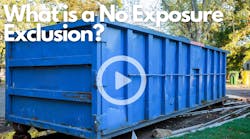During the years I’ve spent in storm water management, we’ve devoted most resources to managing the storm water runoff created by new development. This is critical given the prevalence of watersheds that are already impaired or at risk of impairment. However, prior to implementation of the Phase I and Phase II National Pollutant Discharge Elimination System storm water rules, we created immense amounts of impervious surfaces that still have minimal, if any, storm water control measures (SCMs) in place. Most storm water programs now include requirements for implementing SCMs on redevelopment projects, but these standards are often relaxed relative to new development criterial, and the pace of SCM deployment triggered by redevelopment projects isn’t currently sufficient to promptly address the annual pollutant loads.
Research published in 2009 by Theobold et al. estimated that the amount of impervious surface in the U.S. in the year 2000 was greater than 20 million acres (83,749 km2)(1). The year 2000 seems like an appropriate benchmark as it predates Phase II NPDES storm water rules, so it’s safe to assume much of this acreage either lacks SCMs entirely or is greatly undermanaged relative to modern requirements.
Research published by the Chesapeake Bay Foundation estimates that the amount of developed land in Maryland increased by 154% between the 1970s through the early 2000s while the population only grew by 39%. The same study notes that the Bay watershed still loses ~40,000 acres every year to new development, much of it converted farmland(2). Additionally, while we do deploy SCMs on many newly developed acres, smaller sites often remain unregulated and thus add to our untreated impervious acreage. Still, the overall pollutant load delivered to receiving waters attributable to storm water continues to expand.
An opportunity lies in shifting our mindset relative to development and making density and redevelopment a core focus of our macro storm water strategy. Smart growth is not a new concept, but it doesn’t get much airtime in storm water circles. Smart growth puts emphasis on concentrating development in existing urbanized areas while simultaneously encouraging preservation of existing farmland, open spaces and unsoiled ecosystems. There doesn’t seem to be a consensus on whether implementing SCMs on redevelopment projects is actually more costly than on equivalent greenfield projects, but there seems to be growing acknowledgement that redevelopment projects tend to be more challenging because of the increased prevalence of site specific constraints. In jurisdictions where storm water regulations favor volume reduction and onsite retention, compliance on redevelopment sites can be particularly challenging when onsite infiltration is not viable. To make redevelopment projects viable and cost effective, the key seems to be flexibility.
We need a broad toolbox paired with regulatory flexibility to ensure cost effective SCMs may be implemented. In highly urbanized areas, placing SCMs underground often provides a viable means of addressing storm water quality. Storm water policies should also reflect the reality of urban redevelopment and provide the flexibility to pivot to other types of proven SCMs when conditions warrant doing so.
Prioritizing the redevelopment of existing urban areas has numerous potential benefits. To ensure redevelopment is viable, we need sound storm water policies that provide the flexibility to overcome site specific constraints and a broad SCM toolbox inclusive of all types of practices able to effectively address pollutants of concern.
References
- Theobold, DM, Goetz, SJ, Norman, JB, Jantz, P. (2009). “Watersheds at risk to increased impervious surface cover in the conterminous United States”. Journal of Hydrologic Engineering, 14, 362-368.
- Chesapeake Bay Foundation. “Polluted Stormwater Runoff: A Growing Threat”. (2021) Self Published. Available Online: https://www.cbf.org/issues/polluted-runoff/polluted-stormwater-runoff-a-growing-threat.html
- United Stated Environmental Protection Agency (USEPA). “This is Smart Growth“ (2006). USEPA 231-K-06-002. Available Online: https://www.epa.gov/sites/default/files/2014- 04/documents/this-is-smart-growth.pdf
About the author:
Derek Berg is director of storm water regulatory management, East, for Contech Engineered Solutions. Berg can be reached at [email protected].






